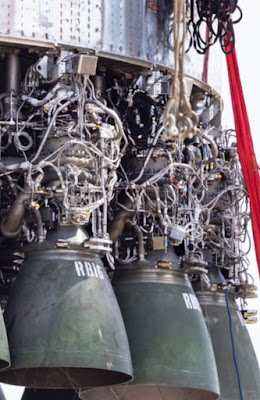The Evolution of SpaceX Engines: From Merlin to Advanced Raptor
• spacex, created by Elon Musk, has transformed space exploration, and much of its success may be attributed to advances in rocket engine technology. Over the years, the firm has made considerable strides, particularly with the creation of the Merlin and Raptor engines.
• Let's take a look at how SpaceX's engines evolved, culminating in the current cutting-edge Raptor engine. The Merlin Engine: Establishing the Foundation SpaceX initially designed the Merlin engine to propel their Falcon 1 and, later, Falcon 9 rockets. The Merlin engine, which used a combination of rocket-grade kerosene (RP-1) and liquid oxygen (LOX), was groundbreaking at the time.
• Its efficiency, reusability, and low cost revolutionized the aerospace industry. Falcon 9's accomplishment with the Merlin engine demonstrated that rockets could be reusable while remaining commercially feasible, opening up new opportunities for space travel.
Enter the Raptor Engine: The Next Level
In 1999, SpaceX introduced the Raptor engine, which was a significant improvement above Merlin. Raptor, unlike its predecessor, operates on a combination of methane (CH4) and liquid oxygen (LOX), making it one of the most efficient full-flow staged combustion engines yet developed.
• The transition to methane has various benefits, including improved performance and easier recharging on worlds such as Mars, where methane might be manufactured. The Raptor was once a complex and detailed structure.
• The first versions were filled with cutting-edge components and technology, pushing the limits of what rocket engines could accomplish. However, early Raptors had a rough, utilitarian design that prioritized performance over aesthetics.
The Evolution of the Raptor: 2020-2024
• Fast forward to 2024, and the Raptor engine has undergone considerable alterations. While the Raptor has always been an engineering marvel, the current version appears sleeker and more refined than previous incarnations.
• The once-complicated structure has been simplified, enhancing performance while also making it more visually appealing. One of the most notable distinctions is the reduction in the number of components, which has resulted in increased efficiency and reliability.
• SpaceX engineers have concentrated on simplifying the engine while maintaining its performance. The new design is more durable and easier to repair, making it ideal for many launches and consistent with SpaceX's goal of quick reusability.
• Furthermore, advances in 3D printing technology have enabled SpaceX to produce essential Raptor components more precisely, lowering production time and costs. The improved engine design also improves cooling systems and thrust output, making it more powerful and efficient than before.
What's next for SpaceX engines?
• The Raptor engine is just in its early stages of development. SpaceX continues to innovate, with the ultimate objective of expanding life to multiple planets. The current Raptor is being used in SpaceX's Starship, which is planned to be the primary vehicle for trips to the Moon, Mars, and beyond.
• As we look ahead, SpaceX is likely to continue refining its engines, maybe building even more powerful versions of the Raptor or totally new engines that could accelerate










.jpeg)

0 Comments